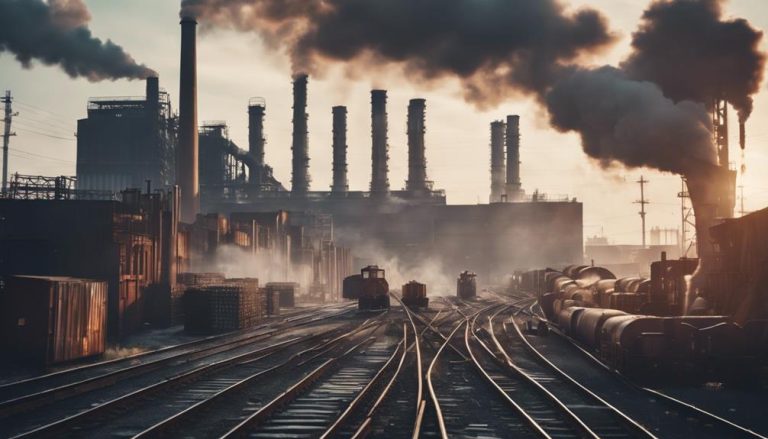
The Rise of Steel Manufacturing: How It Shaped the Modern World
What is the Manufacturing Process of Steel?
Steel manufacturing’s evolution, from ancient methods to modern techniques like the Bessemer process, revolutionized industries worldwide. Steel’s strength and versatility transformed construction, transportation, and infrastructure during the Industrial Revolution, propelling economic growth and global trade. With China as the top consumer, steel remains a crucial indicator of industrial growth and economic development. Innovations in production technologies, sustainability practices, and recycling efforts continue to shape the future of steel manufacturing. Embracing these advancements guarantees economic prosperity and sustainability in a world where steel remains fundamental for infrastructure and market development.
Key Takeaways
- Steel manufacturing revolutionized construction, transportation, and infrastructure.
- Steel’s strength enabled tall buildings, bridges, and railways.
- Mass production of steel drove economic growth during the Industrial Revolution.
- Global trade and connectivity were facilitated by advancements in the steel industry.
- Steel manufacturing catalyzed advancements across various sectors, shaping the modern world.
Evolution of Steel Production
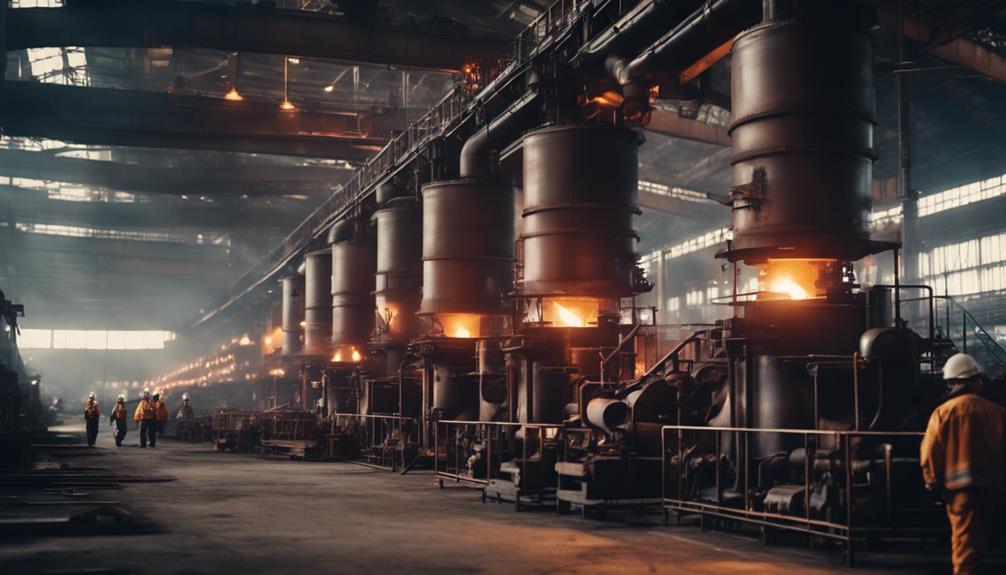
Steel production has undergone a remarkable evolution from ancient techniques to modern methods, revolutionizing industries and shaping the modern world. The evolution of the steel manufacturing process is a proof of human innovation and technological advancement. Starting with ancient methods like the crucible process, where steel was produced in small batches using clay crucibles, the industry shifted towards more efficient techniques over time.
One notable advancement was the development of the Bessemer process in the 19th century, which allowed for the mass production of steel by blowing air through molten iron to remove impurities. This innovation marked a turning point in steel production efficiency. Moreover, the introduction of coke as a fuel source and the adoption of electric arc furnaces further enhanced the manufacturing process, enabling higher production capacities and better quality control.
As steel production capacity increased significantly, industries were able to meet the growing global demand for this versatile material. The continuous development of sustainable practices such as steel recycling and advancements in smelting techniques are paving the way for a more efficient and environmentally friendly future in steel manufacturing.
Impact on Industrial Revolution
During the Industrial Revolution, the rise of steel manufacturing fundamentally transformed various sectors, including construction, transportation, and infrastructure development. Steel’s strength and versatility played a pivotal role in revolutionizing these industries.
The ability of steel to withstand heavy loads and its malleability enabled the construction of tall buildings, expansive bridges, and extensive railway networks, fundamentally altering urban landscapes. Additionally, the affordability and durability of steel drove the mass production of consumer goods and machinery, propelling economic growth during this era.
Innovations such as the Bessemer process, which allowed for the mass production of steel, and the adoption of steel-framed structures marked a significant shift towards modern industrial practices. The expansion of the steel industry also played a critical role in the transportation revolution by facilitating the construction of railways and ships, connecting distant regions and fostering global trade.
To summarize, steel manufacturing during the Industrial Revolution was a catalyst for unprecedented advancements across various sectors, shaping the modern world as we perceive it today.
Steel Global Demand and Consumption
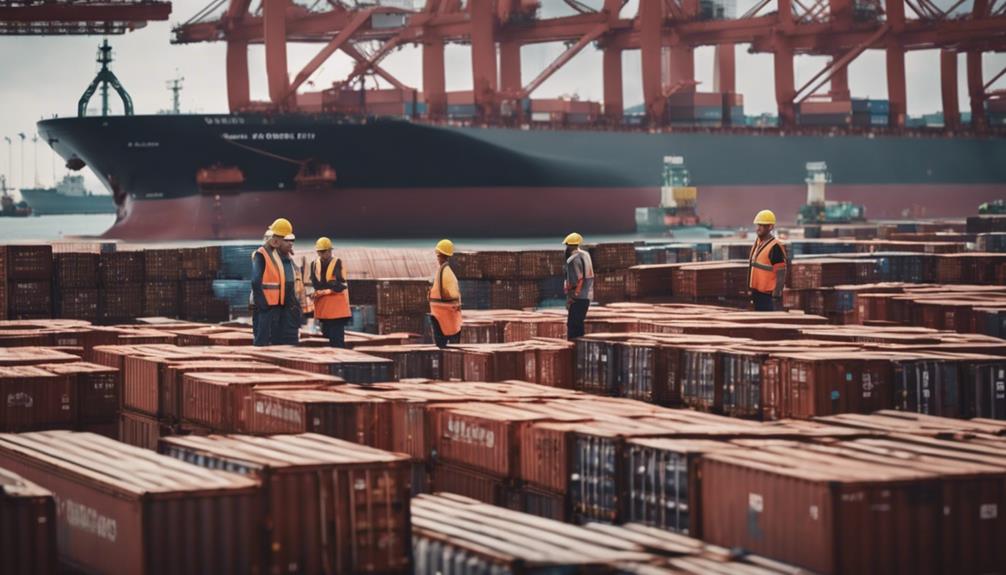
The substantial reliance on steel across diverse industries, coupled with its pivotal role in global construction and infrastructure projects, underscores the significance of understanding the current landscape of global demand and consumption for this essential material.
Steel manufacturing companies worldwide are closely monitoring trends in global steel consumption, with China standing out as the largest consumer driving a significant portion of the demand. The automotive sector, a key consumer of steel, relies heavily on this durable material, with approximately 63% of the average car being made of steel.
Additionally, steel plays a crucial role in manufacturing processes across various industries, highlighting its versatility and importance. Global steel consumption not only fuels construction and infrastructure projects but also serves as a key indicator of economic development and industrial growth.
As steel continues to be a cornerstone material in numerous sectors, understanding and adapting to shifts in global demand and consumption patterns are paramount for steel manufacturing companies to thrive in the modern world.
Innovations in Production Technologies
Revolutionizing the manufacturing process, recent innovations in production technologies have greatly transformed the steel industry’s efficiency and sustainability. The introduction of the Bessemer process in 1855 marked a significant milestone by efficiently removing impurities from iron, revolutionizing steel production.
The Siemens regenerative furnace, developed in the 19th century, further enhanced steel production by eliminating excess carbon, resulting in higher quality steel output. Remarkably, the invention of stainless steel in 1912 has had a profound impact on various industries, including consumer goods, infrastructure, and weaponry.
Steel manufacturers have adapted to advancements in production, such as melting down scrap steel in electric arc furnaces for recycling and sustainability, showcasing the industry’s commitment to environmental responsibility. These innovations have not only increased efficiency but also paved the way for the production of diverse steel grades to meet the evolving demands of modern applications.
Focus on Sustainability and Steel Recycling
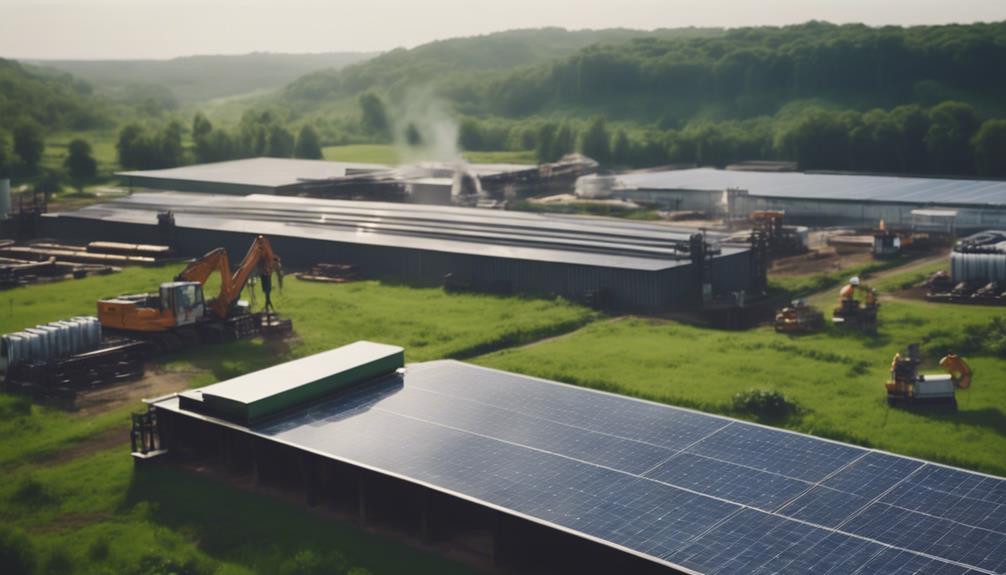
With an increasing global emphasis on environmental responsibility, the steel industry has shifted its focus towards sustainability and recycling practices. Steel recycling plays a vital role in reducing energy consumption, with savings of up to 74% compared to primary steel production. In 2019 alone, the steel industry recycled over 500 million tons of steel globally, showcasing a significant commitment to sustainability.
The environmental benefits of steel recycling are substantial; for instance, recycling one ton of steel can save 1,100 kilograms of iron ore, 630 kilograms of coal, and 55 kilograms of limestone. Additionally, steel recycling contributes to lowering greenhouse gas emissions by over 500 million tons annually, making it a key player in combating climate change.
Sustainable Steel Production and Environmental Impact
In light of the evolving landscape of sustainable steel production and the industry’s commitment to environmental responsibility, future developments in steel manufacturing are positioned to drive economic growth and innovation on a global scale.
Innovations in steel production technologies play a pivotal role in shaping the industry’s trajectory towards increased efficiency and reduced environmental impact. The prioritization of sustainable steel production practices not only aligns with environmental goals but also offers vital economic benefits by improving resource utilization and operational costs.
Also Read: A Guide to Choosing the Right Steel Factory: Factors to Consider
Steel recycling, a growing trend within the sector, holds significant importance in waste reduction and resource conservation, contributing to a more circular economy. As steel remains a fundamental material for infrastructure development, its continued evolution to meet the changing demands of modern society and global markets is essential for supporting ongoing economic growth worldwide.
Embracing these future developments in steel manufacturing will not only foster economic prosperity but also reinforce the industry’s position as a cornerstone of innovation and sustainability in the global economy.
To sum up, the rise of steel manufacturing has been crucial in shaping the modern world through its evolution, impact on industrial revolution, global demand, and innovations in production technologies. With a focus on sustainability and recycling, the steel industry continues to drive economic growth and development. Future developments in steel production are expected to further enhance its importance in various sectors of the global economy.
Frequently Asked Questions
How Did Steel Production Change the World?
Steel production revolutionized industries, enabling the construction of taller and stronger buildings, development of efficient transportation systems like railways and bridges, fueling economic growth in the industrial revolution, enhancing warfare with durable weapons, and improving agriculture through durable tools and machinery.
In What Way Ways Steel Shaped Our World Today?
Steel’s impact on the modern world is profound. From infrastructure to transportation and manufacturing, steel’s strength and versatility have shaped our society. Its role in creating skyscrapers, bridges, vehicles, and machinery highlights its indispensable contribution to our everyday lives.
Why Was Steel so Important in the Development of the Modern World?
Steel was crucial in the development of the modern world due to its unparalleled strength, durability, and versatility. Its impact revolutionized industries like construction and transportation, driving economic growth and technological advancements, making it an indispensable material for societal progress.
How Does the Steel Process Affect the World?
The steel process impacts the world by revolutionizing construction, enabling the creation of skyscrapers and infrastructure, facilitating transportation growth with railway tracks and vehicles, enhancing military capabilities, driving economic development, and influencing various aspects of everyday life with its versatility and durability.
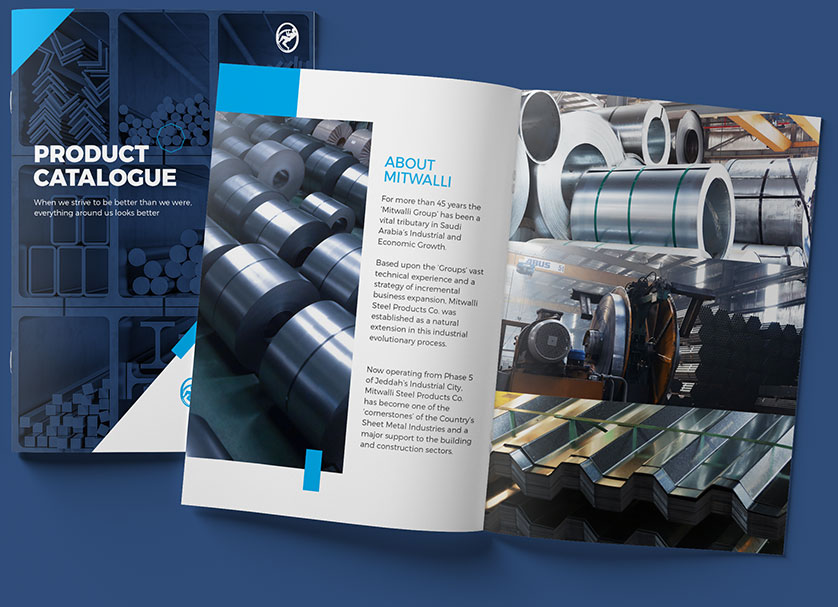
Add New Comment
Deprecated: File Theme without comments.php is deprecated since version 3.0.0 with no alternative available. Please include a comments.php template in your theme. in /home/wwwmsp/public_html/wp-includes/functions.php on line 6121